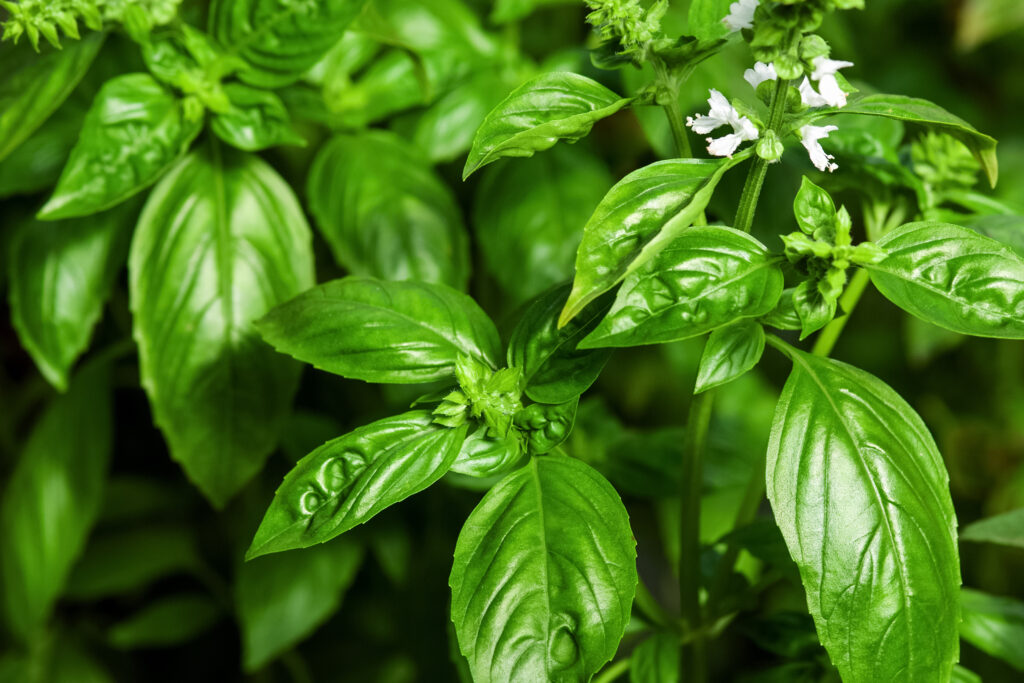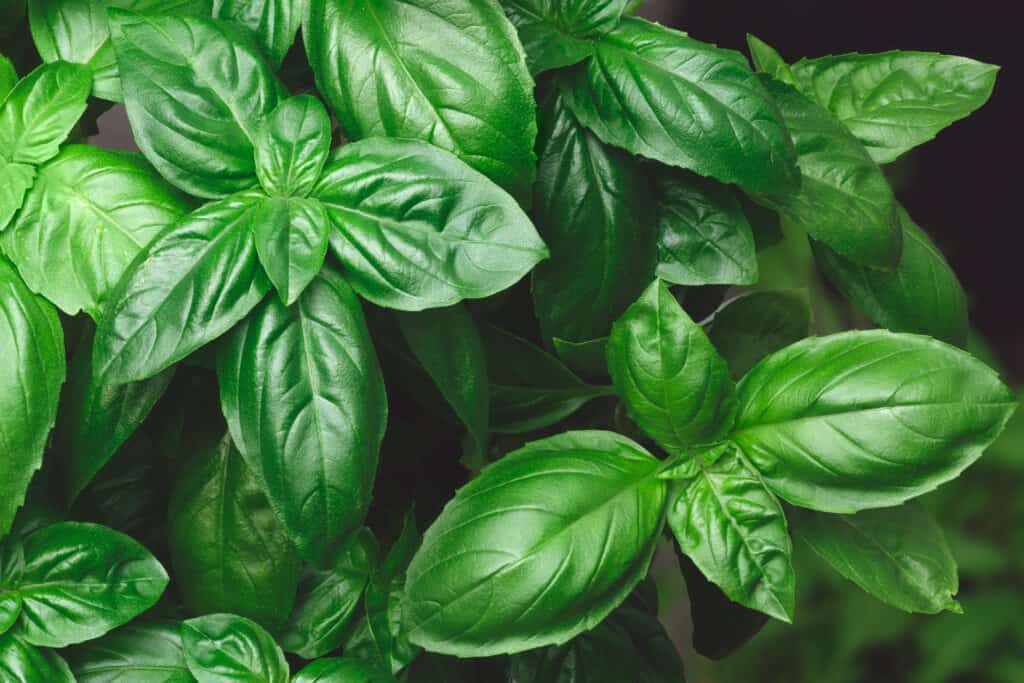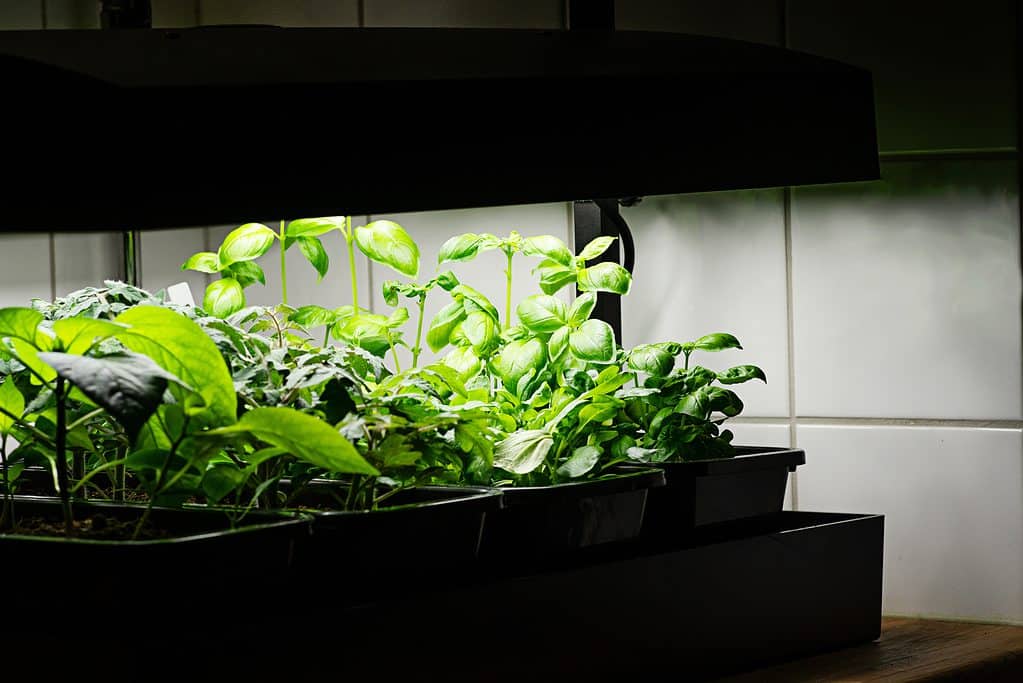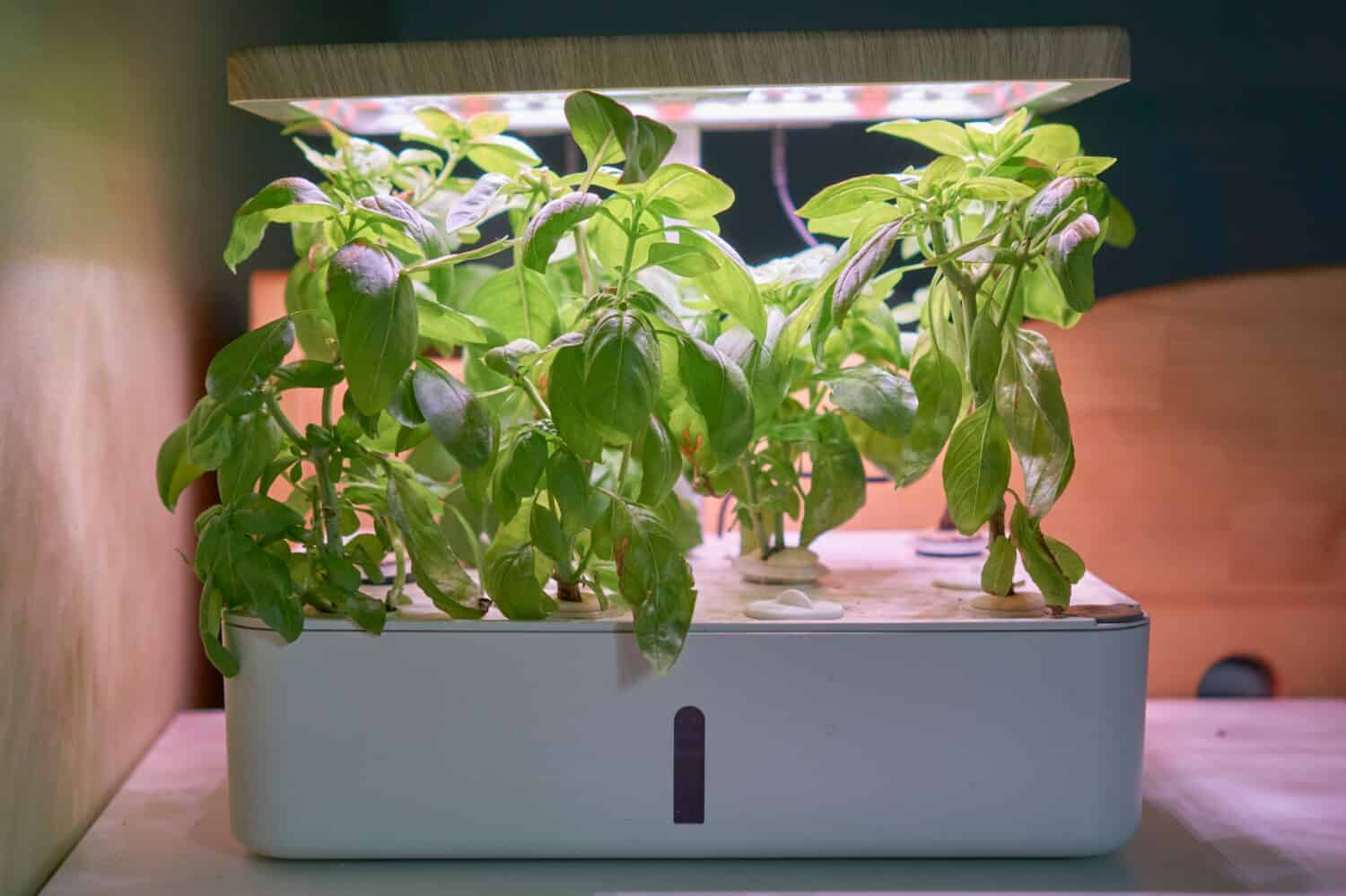You don’t need a farm or even a backyard to grow your food. Some of the easiest plants to grow indoors are herbs, like basil. Did you know there are over 100 varieties of basil? Some are even purple. You can grow this delicious and sweet-smelling plant under grow lights, in a small hydroponic system, or on a windowsill, all without leaving the comfort of your home, and air conditioning! Follow along to learn more about how to grow basil indoors.
About Basil
Basil is an easy-to-grow and delicious plant in the family Lamiaceae. This plant is native to tropical regions from Central Africa to Southeast Asia but grows all over the world. It’s an important ingredient in many Mediterranean dishes. Basil can be either a perennial or annual depending on your growing region. It thrives in warm and tropical environments. One of the most popular types of basil is sweet basil. There are dozens of cultivars, mainly which are sweet basil including lettuce basil, Thai basil, globe basil, and dark opal basil.
Although this plant is mainly used in culinary, it’s also planted as an ornamental. Basil though, has also been used in folk medicine for hundreds of years.

Basil is a herb and a member of the family Lamiaceae.
©Nadya So/Shutterstock.com
How to Grow Basil Indoors
Now that we know a little more about this vibrant plant, we can dive into how to grow basil indoors. It’s a lot easier than it looks! You can purchase an already-started basil plant or from seed. If you grow the plant from seed, it does take longer, however, basil is a fast-growing plant. The three main ways to grow basil indoors are near a windowsill or bright window, under grow lights, and in a hydroponics system. Follow along for a step-by-step guide on growing basil indoors in three different ways.

Basil grows wonderfully indoors.
©Hortimages/Shutterstock.com
Windowsill/Bright Window
Basil plants need at least 6 to 8 hours of bright light per day. However, that doesn’t mean the plant needs to be outside. There are plenty of windows that receive enough light.
Step 1: Choose a sunny window
The first step in growing basil indoors and by a window is to choose the right location. The window should be warm and receive plenty of light. Check to see if the window is drafty. Any holes or cracks in the window can bring in air, cooling down the overall temperature. If the temperature drops significantly throughout the day, this can cause the plant to slow its growth.
Step 2: Plant the seed
After you have the proper placement, you can plant the seed in the soil. Basil plants need nutrient-rich and well-draining soil. The container should also have drainage holes so that water doesn’t get trapped in the bottom, drowning the roots. Plant the seeds about a quarter of an inch deep. You can grow multiple basil plants in one container, but they should be spaced out about an inch.
Step 3: Water and care regularly
Thankfully, basil plants are easy to care for, however, they can develop diseases and attract pests. You should water your basil plant more frequently in the summer, about once every other day.
Step 4: Trim as the plant grows
Basil is a fast-growing plant, in no time you should have plenty of basil leaves at your disposal! If you want your plant to continue growing, you should cut any wilting leaves. Also, trim and use the leaves as needed, more will continue to grow.
Grow Lights

Vegetables growing under a grow light.
©Susie Hedberg/Shutterstock.com
So, what happens when you don’t have any windows in your home, or the windows don’t receive enough light? Are you doomed to live a life without homegrown basil? Thankfully, you can also grow basil plants indoors using grow lights. Grow lights come in all different shapes and sizes. They are light specifically designed to help plants grow by mimicking the sun. But, how do you grow basil plants underneath grow lights?
Step 1: Set up your grow lights
The first step in the process of growing basil indoors using grow lights is to choose the right lights. The problem with growing plants indoors is that the environment is nothing like the outdoors, meaning you have to recreate it. You can purchase large grow lights to set up in a stand, or a small grow light that clips to the side of furniture. It all depends on how many plants you want to grow at once.
It’s best to use blue grow lights as they are designed for leafy greens and not flower production. Some grow lights come with multiple buttons that you can choose to change the growing mode. Make sure the grow lights are about one foot higher than the plants. A common mistake for indoor gardeners is putting the grow lights too close to their plants. Too much direct light can cause yellowing of the leaves. To make it easier, set up an automatic timer that turns the lights on and off for 12 to 14 hours.
Step 2: Plant the seeds
Once your light is set up, you can plant the seeds into the soil. This step is the same as the one listed under growing basil on a windowsill or near a window.
Step 3: Water and care regularly (fertilizer)
Water your basil plant about three to four times a week. Sometimes it requires less watering depending on the season and the intensity of the light. While you can add fertilizer, it’s not always necessary. However, I do recommend using a small fan to promote air circulation. Sometimes, the soil builds up a lot of moisture, which attracts bugs and fungi. If possible, grow basil indoors in an open environment, not underneath cabinets or in an enclosed room.
Step 4: Trim and general maintenance
This step is the same as the previous indoor basil growing method. You’ll need to regularly trim wilting leaves to promote growth. If you leave dead leaves on your basil plant, the plant pours energy into the leaf, which is unnecessary.
Hydroponics

You can grow plants in hydroponic systems.
©sssubinpark/Shutterstock.com
Hydroponics is a neat way to grow your food when you don’t have a lot of space. It’s a perfect option for those of us who live in small spaces, including condos and apartments. You can build a hydroponics system, or purchase one. They come in all different sizes. You can even buy and maintain a hydroponics growing system on your kitchen counter. For this section of the article, we’re diving into how to grow basil indoors using small hydroponic systems.
Step 1: Set up the hydroponics system
The first step is to set up your hydroponics system. Each system though has separate instructions. However, you typically start by putting the system together and filling it up with water. There is a water line you can’t go over or under. After you fill up the system with water, use the plant food it brings, make your own, or buy another type. Plant food is the nutrients you add to the water, which helps basil plants grow and taste good.
The system also comes with buttons you can click depending on what type of plant you want to grow. For example, you can choose flowers or vegetables. Although basil plants do flower, you’ll want to avoid pressing the flower option as the heat can trigger flowering, which stops leaf production. This is great only if you want to collect the seeds. Instead, choose the vegetable or leafy green option. Most hydroponics systems are on an automatic timer, so you don’t have to constantly turn the machine on or off.
Step 2: Sow basil seeds
After the system is set up, the hard part is over! You’ll need to use grow sponges, which are growing mediums. Place them into the machine and add two to three seeds to each grow medium. You should start seeing roots between days 3 and 7. Thin out the seedlings once they develop, only growing one per grow sponge. If you leave multiple plants in one grow medium, this creates too much competition.
Step 3: Feed and clean the system
Every time the water level drops, you’ll need to feed the system with plant food. The amount varies depending on the type and system. Always read your hydroponic system’s instructions before using plant food.
Step 4: Trim and maintain your basil plants
As the plant grows, you’ll need to adjust the grow lights on top. You can extend the light. Cut any wilting or burnt leaves to promote growth. You can also transplant the basil into a container and grow it by the windowsill or outside once it runs out of room.
The photo featured at the top of this post is © David Jalda/Shutterstock.com
Thank you for reading! Have some feedback for us? Contact the AZ Animals editorial team.






